One of the first surprises when we created our pond was to see how popular its muddy bog was (though it was otherwise not successful as a bog). Even robins not nesting in our yard come to get some mud and other bits of materials for their nests. And now that both our ponds have matured, there’s plenty of mud around the edges.
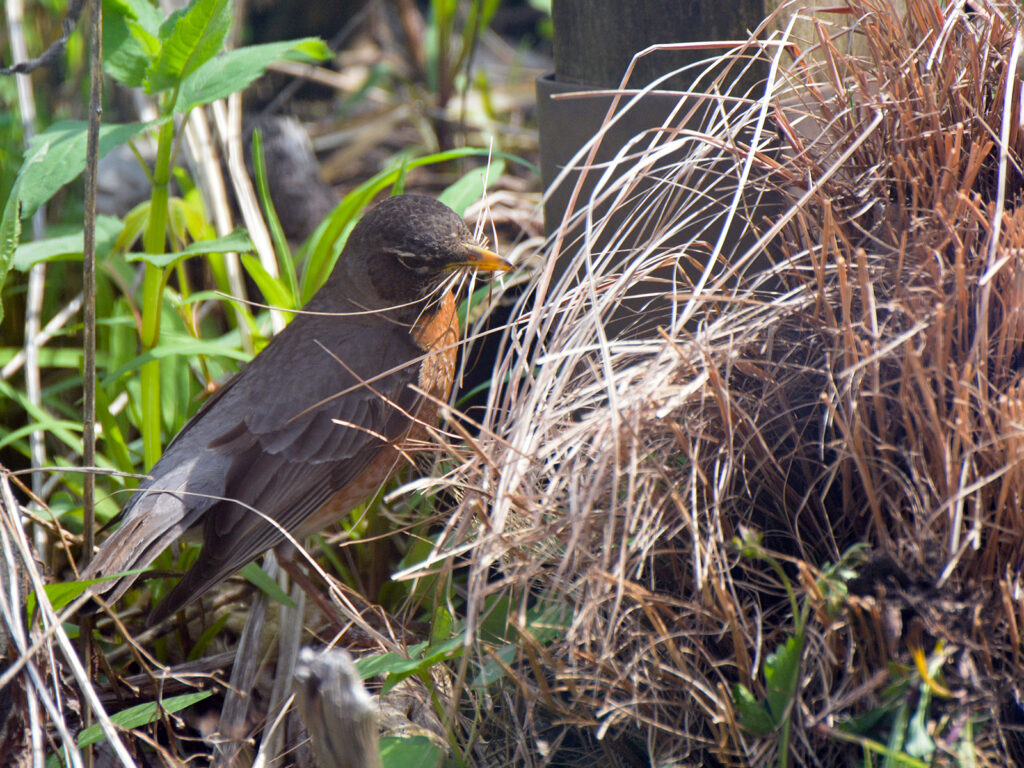
Nesting materials are essential, yet they’re in short supply in the suburbs. Where can birds (or other creatures) find the simple materials they need to construct their nests?
Mud, twigs, moss, dried grasses, twigs, spider webs, and other bits of nature that people generally “clean up” and put out to the curb in trash are essential materials birds need to build their nests.
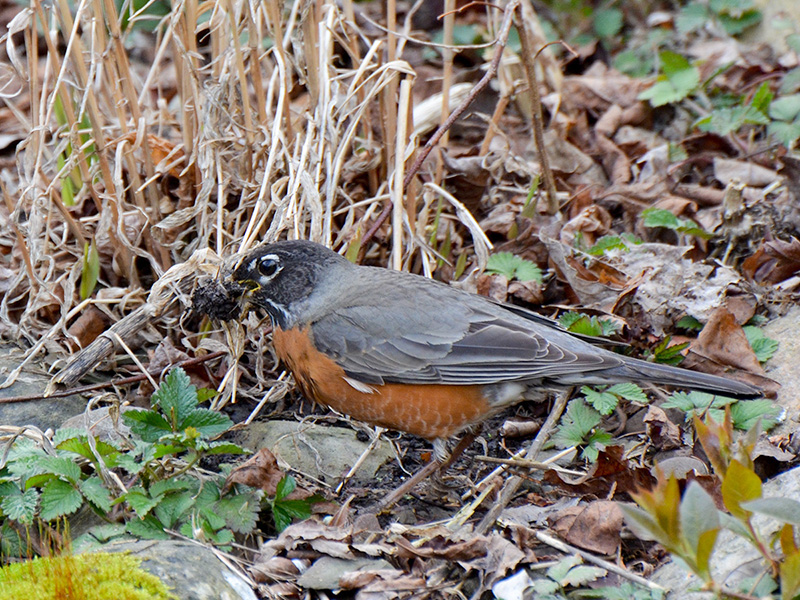
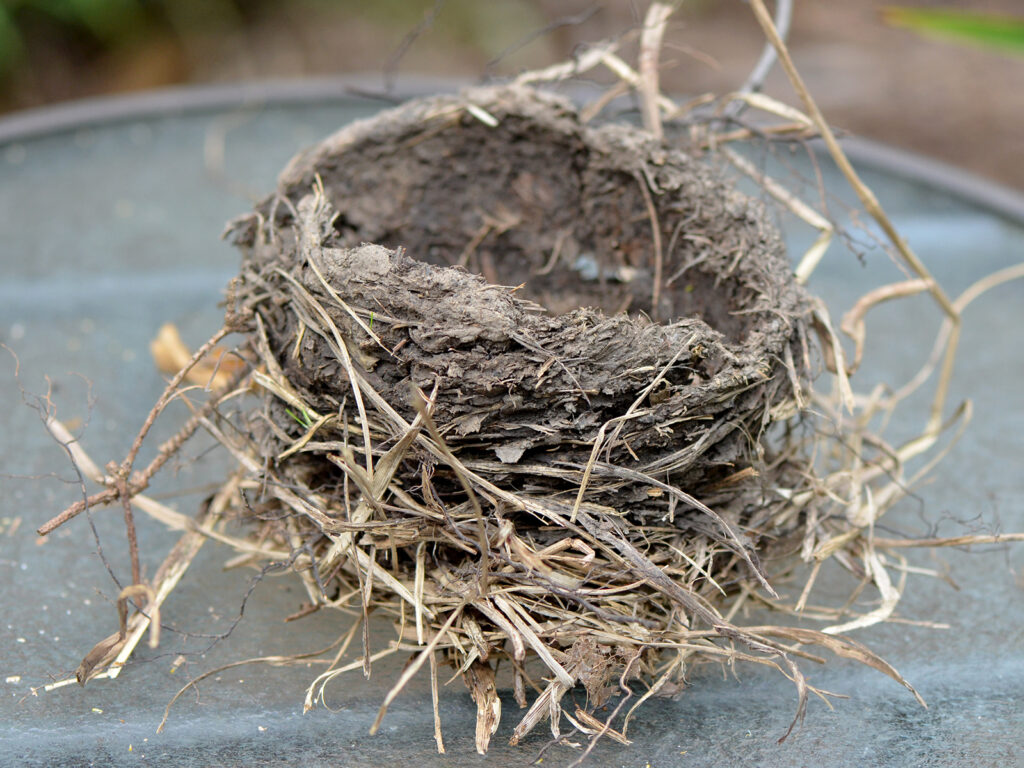
This robin nest (removed after young had fledged) is a wonderful example of natural building using mud and straw.
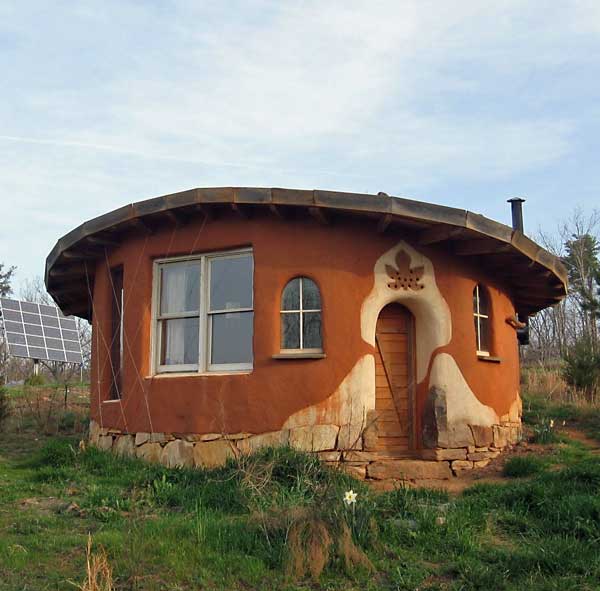
Robins, in other words, are using the building material known as “cob,” a mixture of straw and clay, which our son is using in his structures.
Birds and other creatures are good models of earth-friendly building techniques. These were essential for humans in the past … and will be needed in the future, too, as we realize we must adopt more sustainable living practices.
We noticed this chickadee working very hard in this area, then we noticed why. It was gathering nice dry moss and then flying to one of our nest boxes.
There’s lots of moss in our stream, but this patch right next to the stream and under our clethra is very dry, which the chickadee seemed to prefer for its nest. This might be because it’s inside a nest box. The robin prefers wet moss since it’s creating a kind of adobe material for its nest.
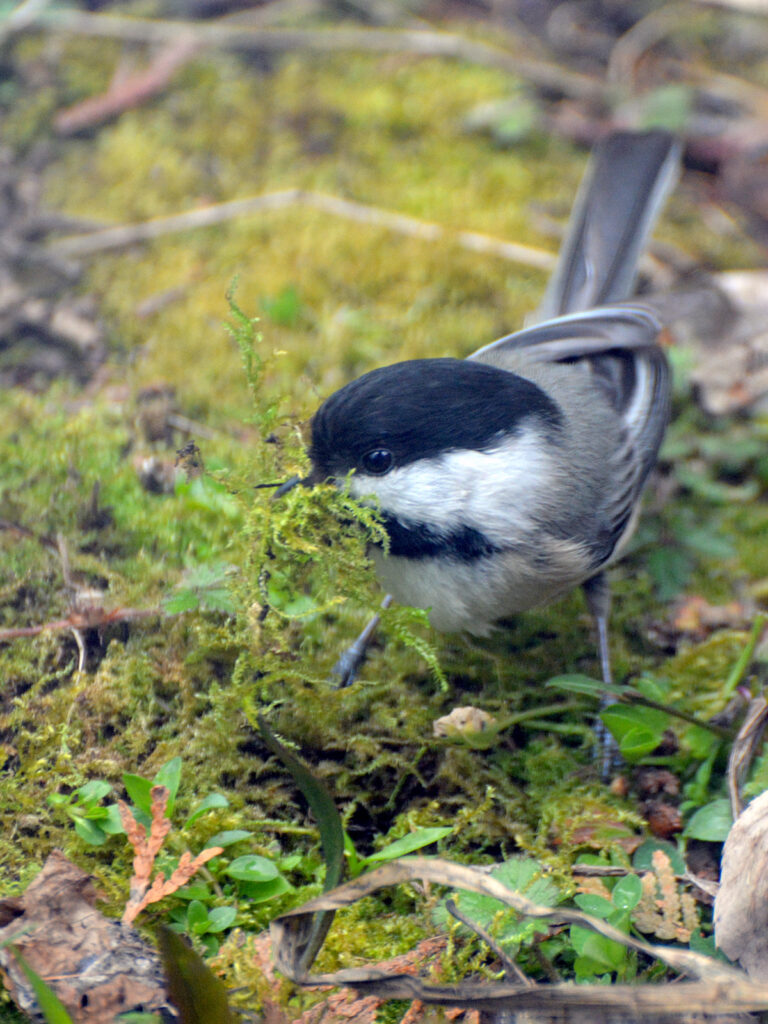

We watched this cardinal for quite a while. She was breaking off last year’s clethra flower stems as nesting material.
She spent a lot of time building a nest … then the grackles took over the arborvitae area and scared the cardinals away.
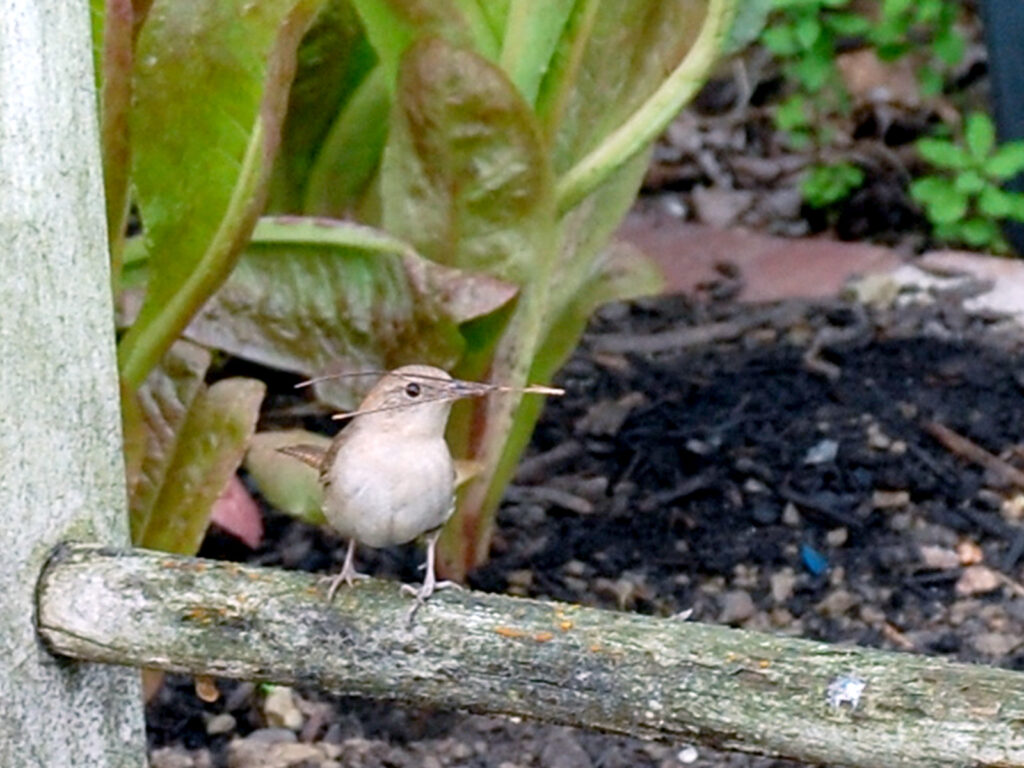
This wren has found a suitable stick for one of its nests. If this is a male, this stick is likely destined to be part of the “sample” nests it builds to show off to the female.
It’s interesting to watch wrens try to fit long sticks into the small nest hole. After a few tries, they turn their head and guide one end into the nest. They’re usually successful, no matter how big the stick is.
Unfortunately, they often build these sample nests on top of a chickadee’s nest. We have quite a few nest boxes, so we hope the wren can build enough of these to satisfy any female wren and still have enough left over for the chickadees.
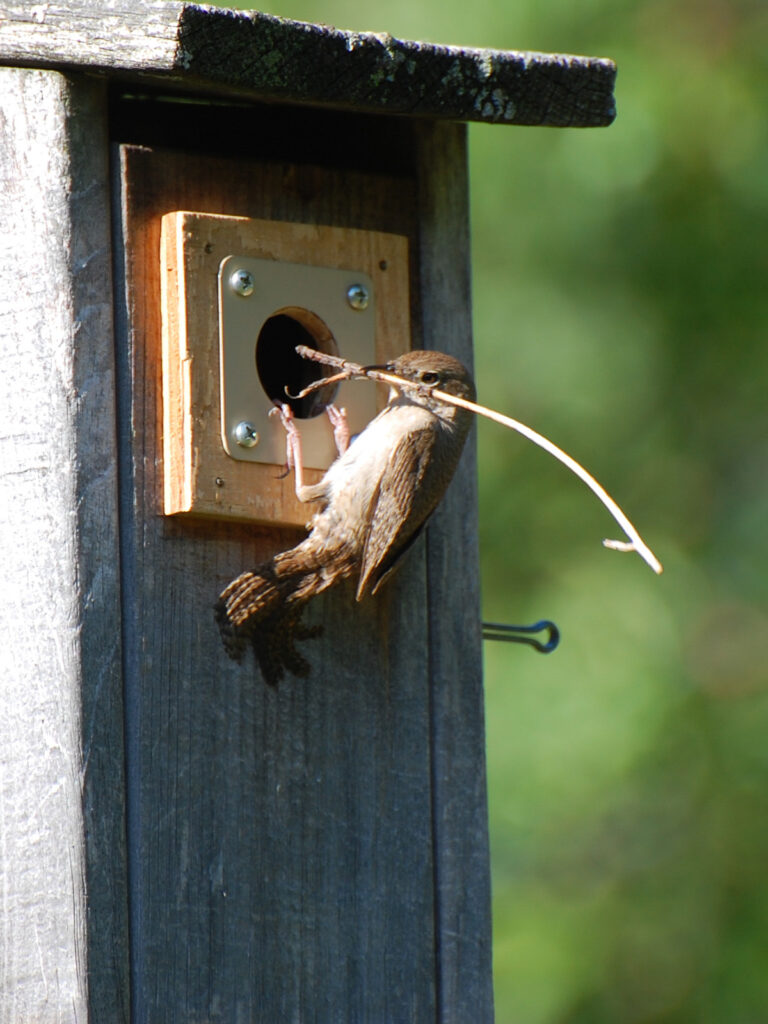
We were thrilled to spot this Baltimore oriole gathering nesting materials since we’ve never seen them nesting in our area.
She came back a few times (but not enough times for me to get a really good photo — this one was taken through the porch screen).
It was interesting to see that she was “harvesting” fibers from the previous year’s milkweed stalks.
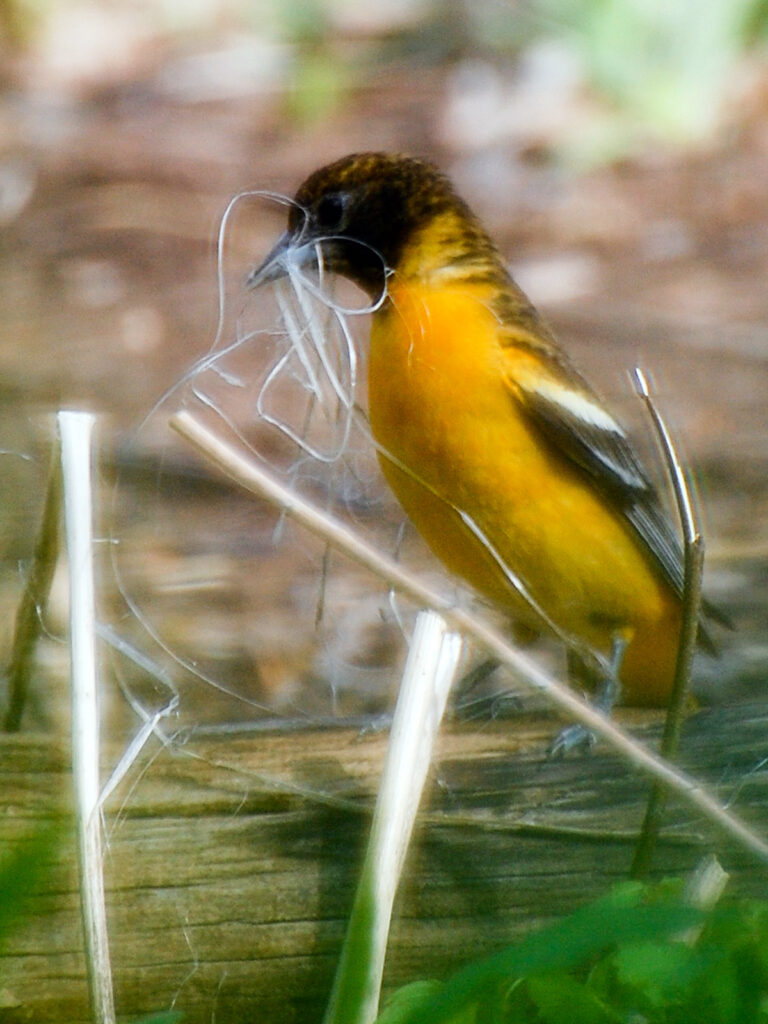
This isn’t the first time I’ve seen birds using these fibers. Here’s a chickadee gathering these fibers, and I’ve seen other birds doing this, too.
This is yet another reason to plant milkweed (besides the fact that they’re essential to monarch butterflies), especially when we leave the stalks standing from the previous year.
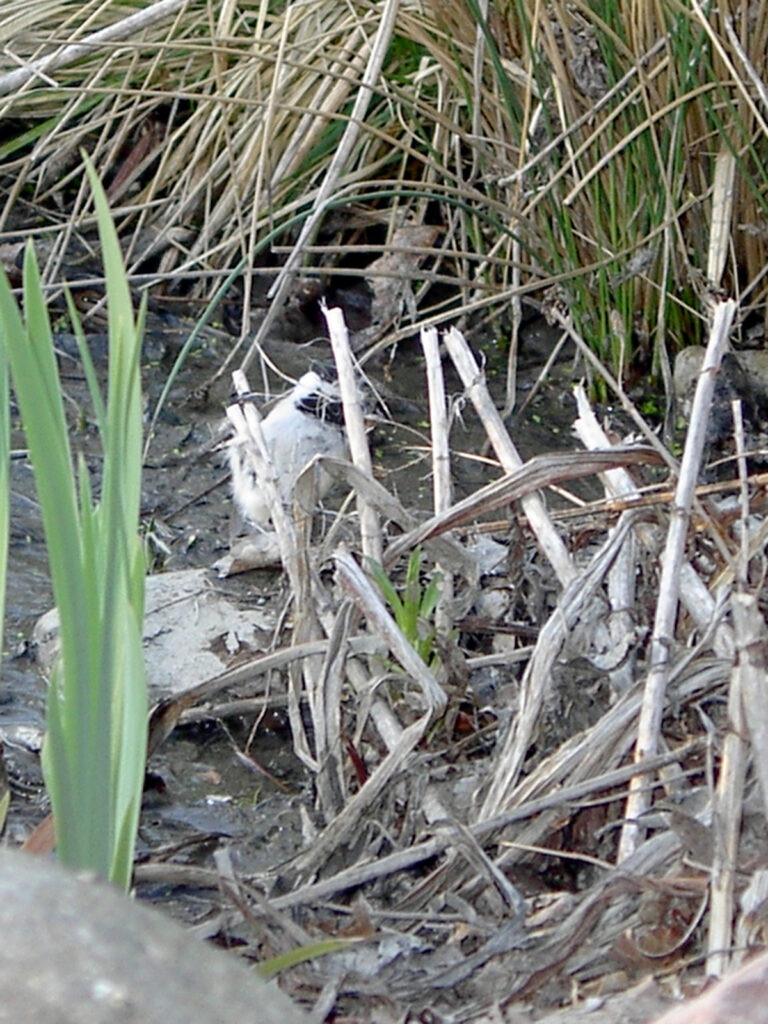
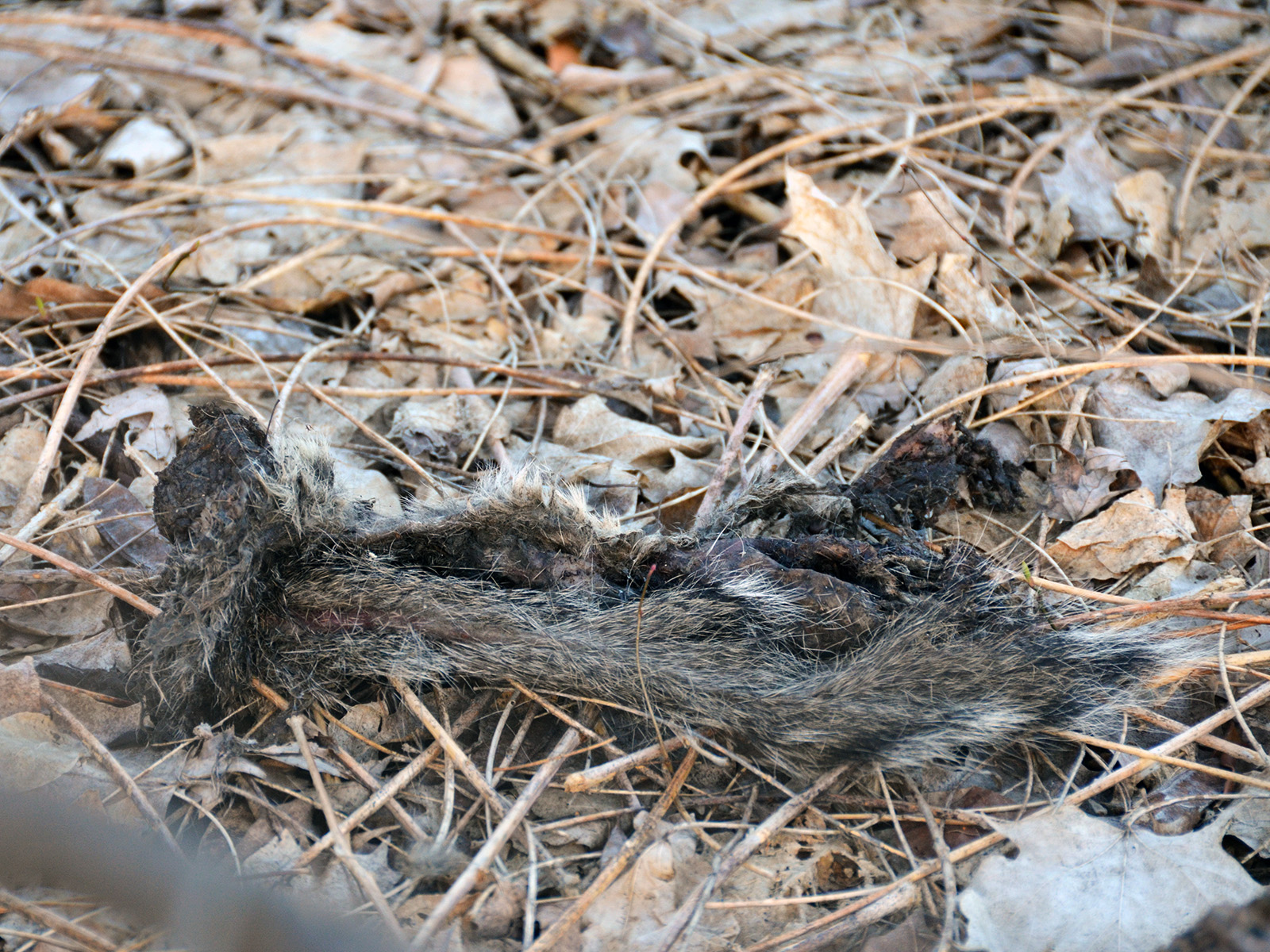
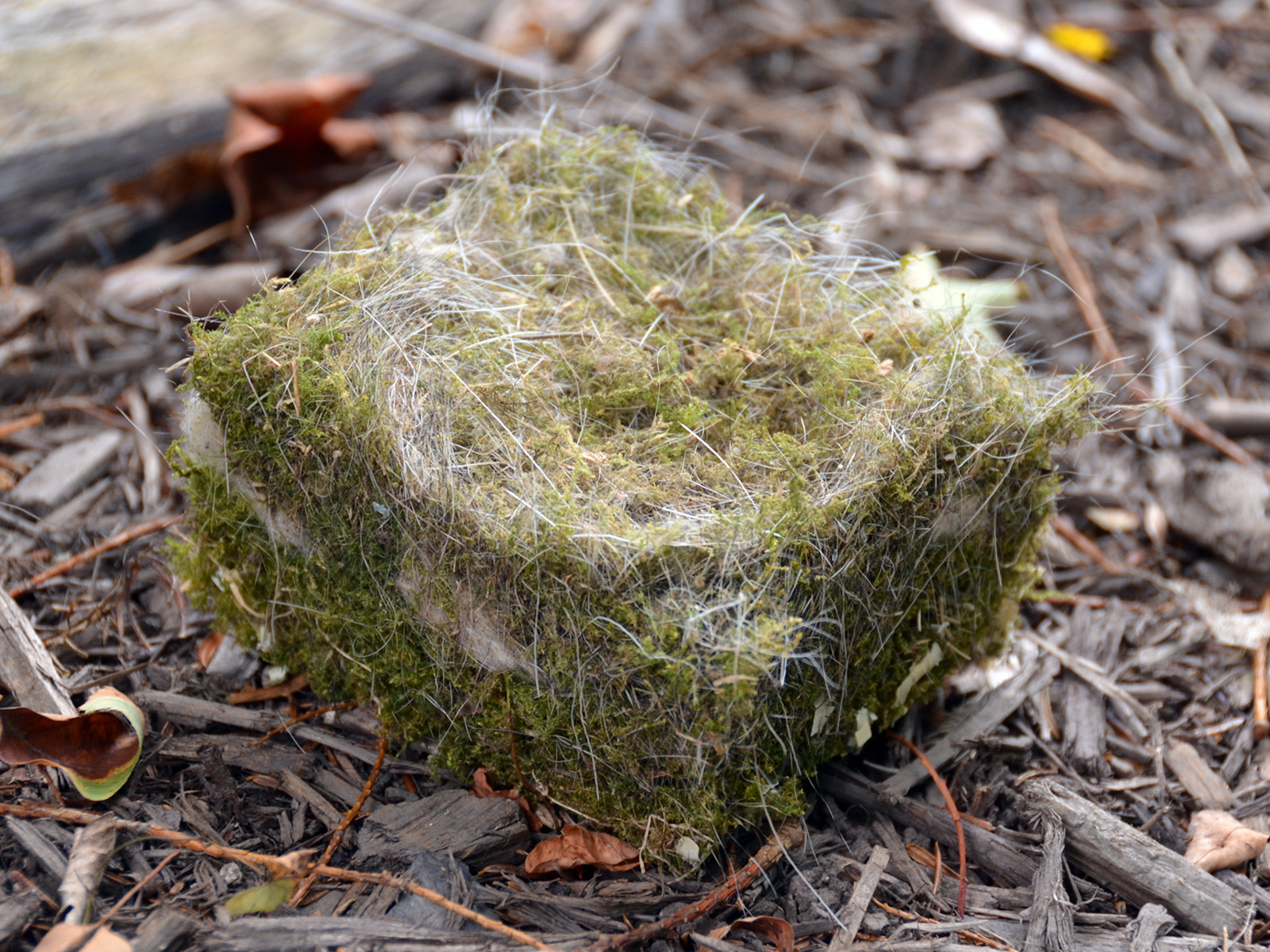
One year we spotted a chickadee grabbing fur from this dead squirrel to use as nesting materials (though we weren’t fast enough to get a picture). After nesting season, we removed the nest from the box and saw all the moss and squirrel hair that it had used in its construction. It must have been a soft and cozy nest for the babies!
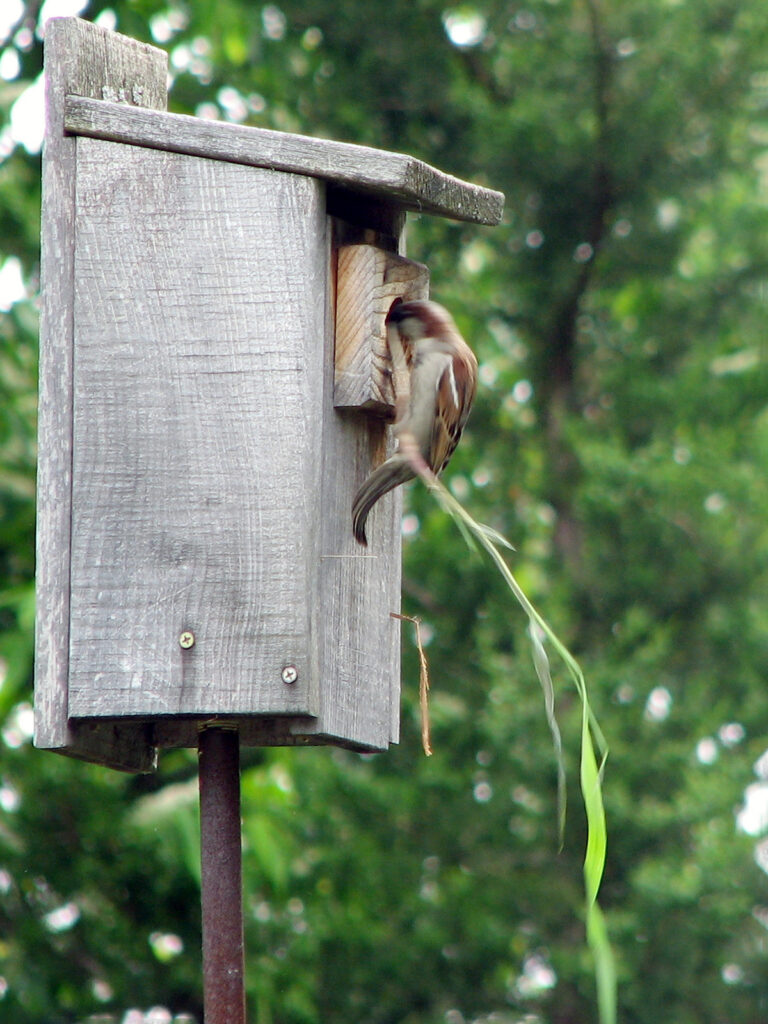
House sparrows gather some of the longest bits of nesting materials we’ve seen in our yard. They generally manage to get it into the nest box, though sometimes they’re too optimistic and have to give up.
This is the nest box they most often use, and as unpleasant as it is, we maintain it as a house sparrow population control nest. In other words, we remove the eggs once each clutch is laid. We should be doing more, though: just trapping and dispatching them for the benefit of native birds. Maybe we’ll get the courage…
Unfortunately, to the detriment of native species, they had been incredibly prolific. We were happy that these eggs could at least be used to help scientists study variability in eggs.
Oddly, in the last few years (in the 2020s), we’ve noticed a decline in the number of house sparrows visiting our yard This decline has been confirmed by Breeding Bird Survey research. Though this is good news, I wonder why this has happened. It’s unlikely to be house sparrow-specific, so I worry that whatever has happened may be affecting native species, too.
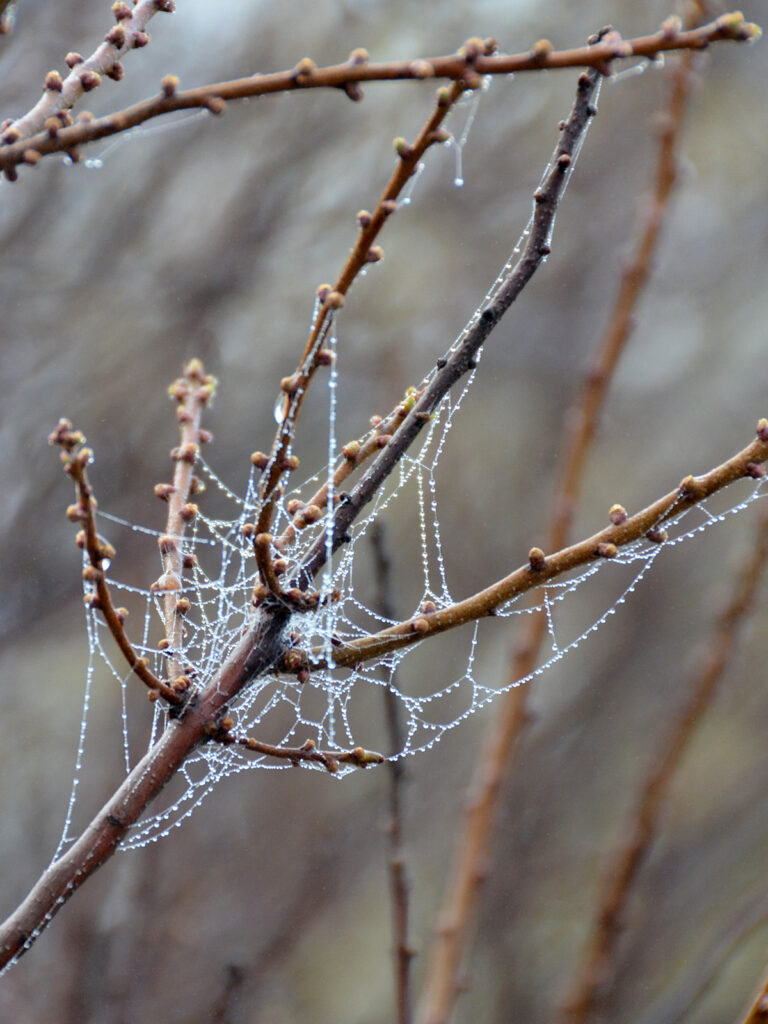
Don’t forget to leave spider webs in your yard. They’re ESSENTIAL building materials for hummingbird nests!
What other material would be strong enough to hold together a hummingbird’s tiny nest, yet be flexible enough to grow with the baby birds?
This is just one of the many little bits and pieces of nature that are critical to creatures’ survival but which we “clean up” and dispose to make our yards “neat.”
Resources
IMPORTANT!
We find that leaving bits and pieces of nature in our yard provides all our birds need, but some people like to provide additional nesting materials.
Detailed info is in the resources below, but a quick summary from NestWatch is:
DO provide any combination of the following:
dead twigs and leaves, dry grass (make sure the grass is chemical-free), feathers, plant fluff or down (e.g., cattail fluff, cottonwood down), moss, bark strips, and pine needles.
DO NOT provide:
plastic strips (including Easter basket “grass”), tinsel, cellophane, aluminum foil, dryer lint, animal fur or hair (including human hair), yarn, felt, or bits of cloth.
Other resources:
- Texas Backyard Wildlife:
- Nat’l Audubon Society:
- Cornell Lab of Ornithology:
- Nat’l Wildlife Fed’n:
- American Bird Conservancy:
- VIDEO: Hummingbird nests 101 – A short video shows the hummer using spider web!
Robin nest or human house?
One can imagine people thousands of years ago being inspired by the kinds of structures animals created. For example, the robin builds sturdy nests of straw and mud, perhaps the inspiration for cob construction. Here’s one our son built. He also built a partly-cob home in a city environment.
Biomimicry — design based on nature — is a hot new field.
